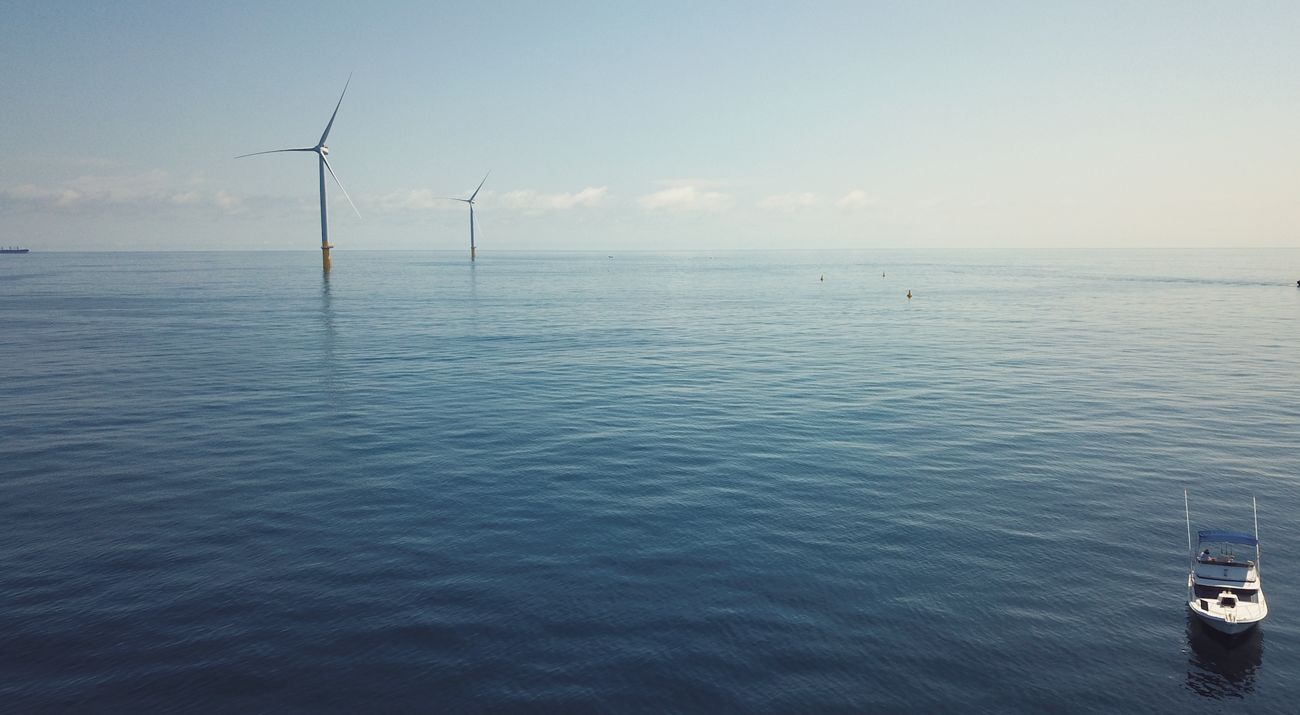New Study Uses Electronic Tags to Explore Relationship Between Fish Behavior and Offshore Wind Energy Construction
This first study of its kind, results will fill knowledge gaps to better inform fisheries and wind energy construction practices in the Atlantic Ocean
Media Contacts
-
Kelley Galownia
The Nature Conservancy
Phone: 571-403-4625
Email: Kelley.Galownia@tnc.org
A new cooperative agreement between The Nature Conservancy (TNC) and the National Oceanic and Atmospheric Administration (NOAA) will enable scientists to implement a first-of-its-kind study investigating fish behavior in response to offshore wind turbine installation and related construction activities. This study will use fine-scale positioning technology and be conducted at the Coastal Virginia Offshore Wind (CVOW) research site, located approximately 27 miles off the coast of Virginia Beach, Virginia. Developed and operated by Dominion Energy, CVOW is the second offshore wind farm operating in the United States with two existing turbines and 176 more on the way.
Between now and 2027, TNC’s marine scientists in Virginia, Kate Wilke and Brendan Runde, will partner with acoustics and fisheries experts from NOAA’s Northeast Fisheries Science Center on fieldwork and analysis to understand how local fish populations react to offshore wind development. This includes examining fish response to construction noise, the value of new vertical structures as fish habitat, and whether substrate areas with buried transmission cables are used or avoided by tagged fish. Further, researchers will monitor the ambient soundscape — all the natural, biological, and human-generated sounds — in the area to document changes that occur during the expansion of the CVOW site.
“Given the expansion of wind energy development along the East Coast, our team at NOAA’s Northeast Fisheries Science Center is excited to collaborate with The Nature Conservancy and to support this important work,” said Jon Hare, Ph.D., Director of the NOAA Northeast Fisheries Science Center. “This research will help fill gaps in our understanding of how offshore wind development interacts with commercial and recreational fisheries, and will broaden our marine soundscapes research.”
The study results — including at least two publications — will be made publicly available for environmental impact assessments of future offshore wind projects and inform management of such projects. Understanding the value of the turbines as vertical habitats will also have implications on future fisheries management, including monitoring protocols and surveys.
The Mid-Atlantic Seascape is a highly productive, diverse marine ecosystem, as well as an industrialized, urban hub for commerce. From Long Island to Cape Hatteras, nearly 50 million people call its shores home, and its primary ocean-dependent industries — shipping, sport and commercial fishing, tourism, recreation, and offshore wind energy — generate an estimated $48 billion per year. However, the ocean along the Atlantic Coast is in a critical period of change and faces a growing list of challenges: important fish species are reacting to climate change, more people than ever are using the ocean for recreation, and renewable energy development is rapidly expanding.
The U.S. Atlantic Ocean currently hosts seven operational offshore wind turbines — five off the coast of Block Island in New England and two off of Virginia’s coast — with many projects planned over the next five to ten years.
“More than 3,000 new offshore wind turbines are expected to be installed off the East Coast by 2030,” said Brendan Runde, Ph.D., marine scientist with TNC. “While we need renewable energy, it is also critical that we understand how this development affects marine species. The more we know, the more we can advise on how to avoid or minimize those impacts.”
Over the next several months, scientists will collect various fish species — including black sea bass, gray triggerfish, greater amberjack, summer flounder, and channeled whelk — near the two existing turbines using a hook-and-line. Scientists will then record biological information, tag the fish with electronic transmitters, and safely release them back into the water. An array of approximately 25 data receivers will be anchored to the seafloor near the tagging locations. These receivers will be recovered, and the data will be downloaded every six months.
Once construction on the full array of 176 turbines begins in May 2024, TNC’s scientists will use underwater microphones — known as “acoustic hydrophones” — to monitor noise levels. These noise levels and the behaviors of tagged fish will be overlayed to see whether any behavior changes can be noted.
“Our team is fully committed to ensuring we construct and operate CVOW in a manner that is protective of the environment as well as marine and avian species,” said Scott Lawton, environmental technical advisor at Dominion Energy. “We look forward to working with The Nature Conservancy and NOAA to learn more about the relationship between offshore wind and fish behavior.”
This study joins another already-active study at the same CVOW site on whimbrel migration, a partnership between TNC and the College of William & Mary’s Center for Conservation Biology, made possible through funding from Dominion Energy.
The Nature Conservancy is a global conservation organization dedicated to conserving the lands and waters on which all life depends. Guided by science, we create innovative, on-the-ground solutions to our world’s toughest challenges so that nature and people can thrive together. We are tackling climate change, conserving lands, waters and oceans at an unprecedented scale, providing food and water sustainably and helping make cities more resilient. The Nature Conservancy is working to make a lasting difference around the world in 81 countries and territories (40 by direct conservation impact and 41 through partners) through a collaborative approach that engages local communities, governments, the private sector, and other partners. To learn more, visit nature.org or follow @nature_press on X.
